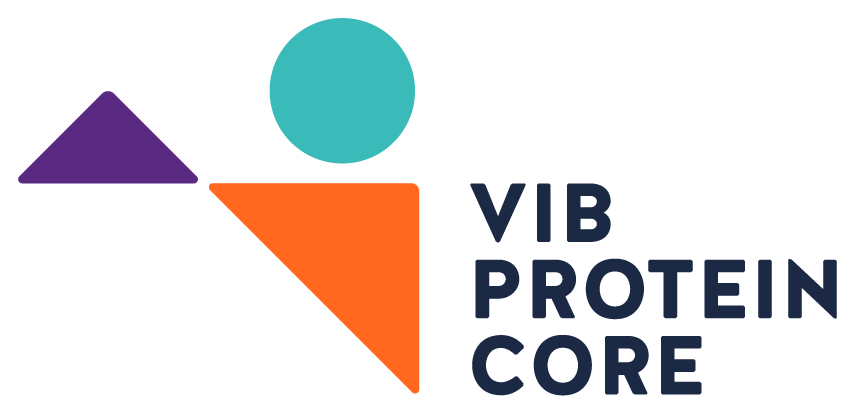Expertise & Technology
FastScreen
FastScreen is a 3-4 week feasibility study service for Escherichia coli, Pichia pastoris and mammalian cell expression solutions that are routinely used at the Protein Core. In the end, (± 1 month) FastScreen offers a go/no-go decision for expression strategies to our staff. The service presents a comparison of several production strategies in a uniform vector frame, allowing true strategy comparison.
Production
Scale-up facilities for the fermentation of microbial organisms up to 20 litres (fed-batch fermentation) and mammalian cells up to 12 litres are available at the Protein Core. Accordingly, standard operating procedures for the collection and lysis of cells adapted to these scales are available.
FastFold
Production in inclusion bodies is a well-established strategy in Escherichia coli. Inclusion bodies are usually more resistant to proteases and thus accumulate in high amounts. Also, after the isolation of the inclusion bodies, the protein of interest is already reasonably pure. However, the process of refolding the denatured proteins can be a difficult task, with low yield and laborious methods. The Protein Core offers a 2-3 week study using a matrix screening to find the optimal refolding buffer. This matrix screen is designed in-house. Also, some methods of refolding can be compared (dilution, dialysis, on-column). The deliverable is a study and an outline for a refolding process, which can also be validated.
FastClean
If no purification method is available, a screen can be set up to test a range of different (or combinations of) matrices to purify the protein of interest.
Conjugation
Fluorescent molecules (antibodies) for microscopy are very expensive for VIB research groups. When the hybridoma cell line is available for the production of an antibody, the Protein Core can easily produce mg amounts (1-100 mg) for labelling. A lot of labelling is done with AlexaFluor groups which are easy to use. The Protein Core has also expression vectors available for the fusion of proteins to fluorescent proteins (GFP, mCherry). Besides fluorescent labelling; small, very stable molecules like nanobodies®, alphabodies®, affibodies® are becoming increasingly important for therapeutic use. A disadvantage of these molecules is their low serum half-life. This can be increased by covalent labelling with all kinds of molecules (like PEG). The Protein Core also has expertise in this field.
Nanobody production and purification
After the selection of your nanobodies® by the Nanobody Core, the Protein Core can help you with the production and purification. The Protein Core has already produced and purified hundreds of nanobodies®: from Escherichia coli, from Pichia pastoris, with fusion tag, without fusion tag, small scale, 20 litre fermenter scale, monovalent, bivalent, fused to cytokines, ... Escherichia coli is still the most used system for the expression of monovalent nanobodies® and the easiest one. The yield varies from nanobody® to nanobody®. When you want to increase the yield, the Protein Core can shift the production from Escherichia coli to Pichia pastoris. In Pichia pastoris is the yield much higher. Also, the yield is going down from monovalent to bivalent, trivalent, ... nanobodies® in Escherichia coli. When you start with bivalent nanobodies®, you have to shift to Pichia pastoris to be good. Also, when you want to express nanobodies® without any affinity tag, Pichia pastoris is the system to use. In this way, you can purify the nanobody® with conventional chromatography (ion exchange, hydrophobic interaction, ...). When you start with nanobodies® fused to other proteins like cytokines, mammalian cells (HEK293F) are needed when post-translational modification is important.
Protein-Protein Interactions
The folding of proteins and protein-protein interactions are becoming more and more important. A limited amount of technologies to analyze this is available at the Protein Core and distributed over different VIB research groups (Biacore, SwitchSense, AlphaScreen). The Protein Core wants to invest in the knowledge of these technologies and instruments when their opportunities are proven. Initial projects can be done on demos and instruments available in the protein service facility consortium in Europe (P4EU). Important technologies: FACS, CD spectrometry, DLS, SLS, MALS, isothermic titration calorimetry, and microscale thermophoresis, ...
Activity Assays
For some proteins, not only the purity, affinity, and concentration, … is important but also the activity. Most of these assays are cellular assays. The Protein Core has the knowledge to perform some assays for cytokines (TNFα, IL2, …). For these cytokine assays, WHO standards are used to refer to.
